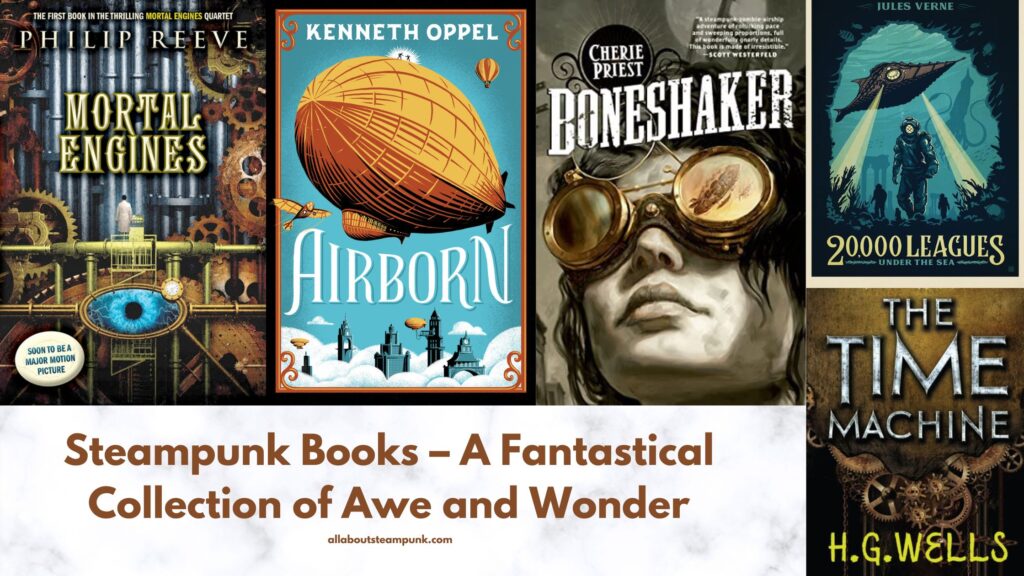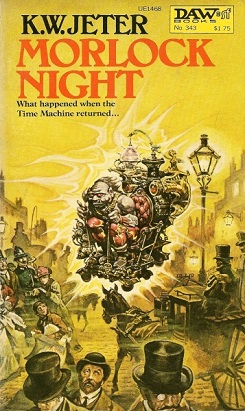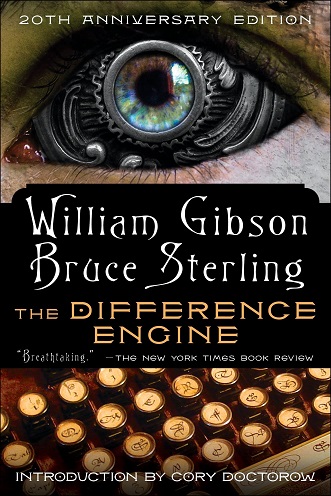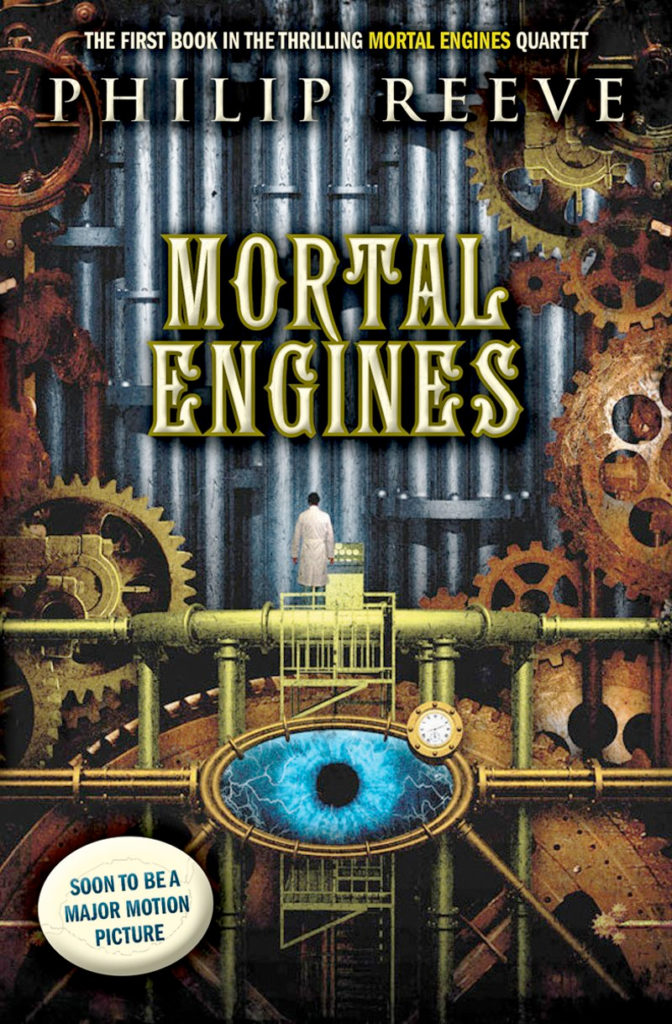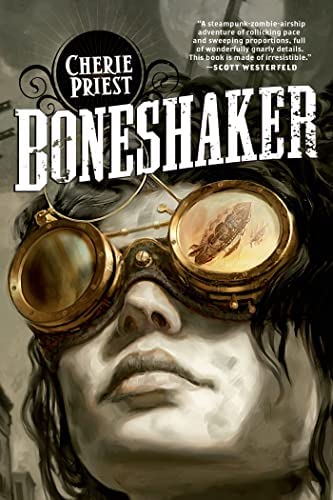The steampunk genre first gained popularity in the late 1980s as an offshoot of science fiction and fantasy. Gear-encrusted guns, corsets, airships, tiny hats, and matching parasols were some of the defining features that gave steampunk its own identity. Steampunk books usually tip-toes somewhere between the genres of science fiction and fantasy, often combining elements from the two genres.
While there are no steadfast rules that govern the plot of steampunk books, it is widely accepted among enthusiasts that certain features must be included for a work to be recognized as steampunk. These features include a story with a world using a real or imagined version of 19th-century technology that is driven by steam power, gears, and clockwork. These stories may also include Victorian-era class and economic structures, implicit or explicit social critique, or an adventure-oriented plotline. Stories associated with Steampunk books also include an emphasis on the empowerment of individuals in the face of industrial standardization and the advance of modern bureaucratic government.
Contents
Understanding Steampunk Books: Plots and Characters


Steampunk plots usually follow a protagonist’s journey that may take the form of an adventure quest or find their way around a conflicting society. A steampunk plot can also focus on Victorian class structure and political environment that provides fertile grounds for conflict and adventure.
A steampunk world is habitable by all sorts of characters, with an emphasis on building characters around the economy, culture, and technology of the Victorian Era. A man of science, the polymath (a Renaissance man or woman), the common peasant, the explorer, or the pirate are some common characters that are associated with the steampunk genre. James P. Blaylock’s novel Lord Kelvin’s Machine (1992) is an example that incorporates a scientist as the main protagonist of the plot. On the other hand, Scott Westerfeld’s novel Leviathan is a perfect example of a commoner rising to the ranks of the elite due to their expertise and knowledge.
Steampunk Books: Settings
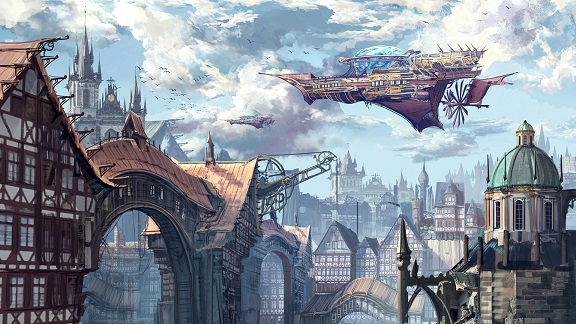
The setting of any steampunk book starts out with a problem in the environment of the setting. This setting is used by the characters of steampunk books to act out their desires, hatch their fiendish plans and meet their just (or unjust) goals. The Victorian era is the default setting for any steampunk story. The economic and political heart of the globe in late-19th-century London offers an infinitely diverse urban geography, cutting-edge technology of the times, and the seat of the British Empire with all the pomp and politics of the time.

However, over time the Victorian England setting has become quite common and authors have started to look at other parts of the world for setting inspiration and diversity. The American West, especially the post-Civil War era, has provided steampunk authors with a wide range of elements and characters to add to their stories. The lingering trace of the old magical world, the fading ghosts of Native American culture, the half-healed social wounds of the War between the States, and the vastly varied terrain of North America all intersect to provide a rich breeding ground for a steampunk setting.
While these are the basic settings that are incorporated by several steampunk authors, over time people have also started to look further back into pre-Colombian societies or ancient Chinese civilizations to plot out stories that include the fantastical elements and technologies from these cultures.
Amazing Steampunk Books and Stories
Even though steampunk gained popularity in the late 1980s, the essence of steampunk can be traced as far back as the 1870s and 1890s to the works of Jules Verne and H.G. Wells. Early science fiction novels by these authors provided the aesthetics associated with steampunk. While not really steampunk, these authors provided much of the groundwork for recent steampunk novelists to take inspiration from. Authors such as Michael Moorcock, K W Jeter, Bruce Sterling, etc. increased the visibility of this genre by providing descriptive narrations in their works. ‘The Difference Engine’ by William Gibson and Bruce Sterling (1990) is considered by many to be one of the best steampunk novels while providing a lot of rigorous details and having compelling characterization.
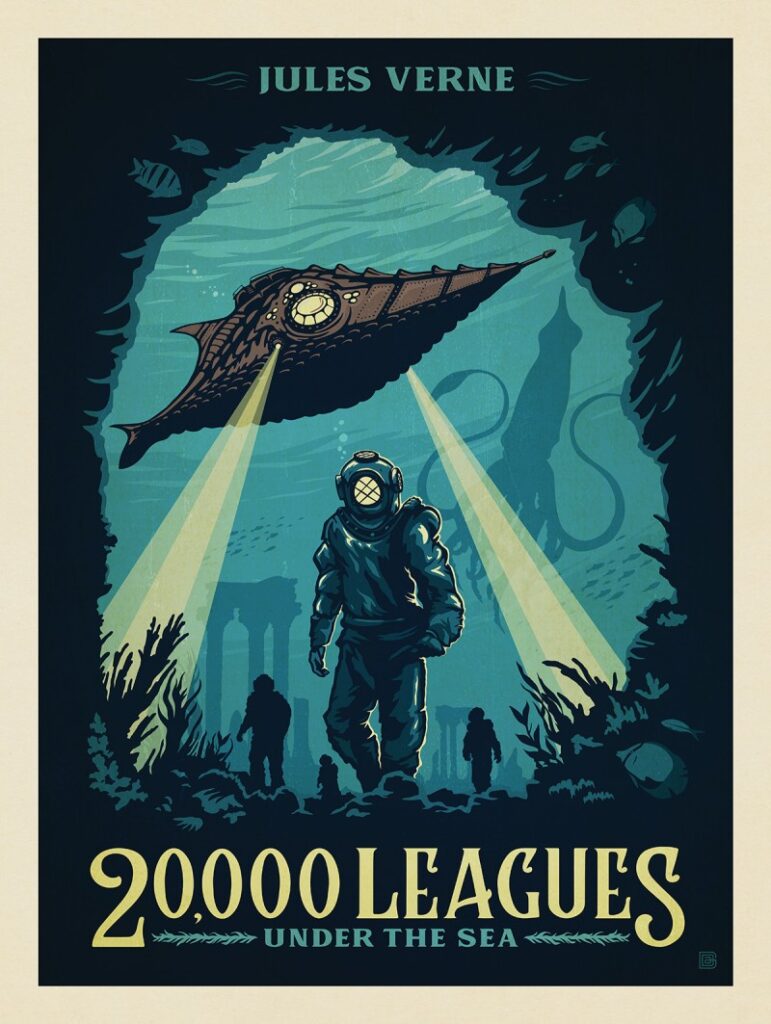
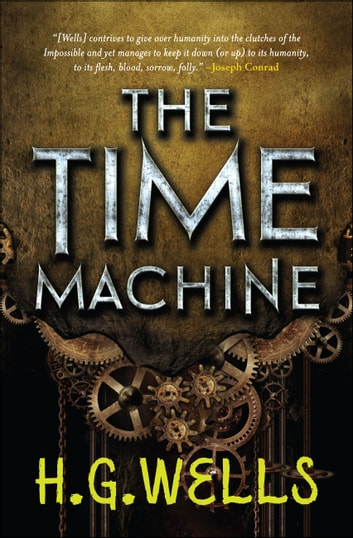
Here is our list of some amazing steampunk books that you can read to immerse yourself in this fantastical world.
1. Morlock Night by K.W. Jeter
The Morlock Night novel picks up where H.G. Wells’ The Time Machine left off. Suffice it to say Jeter marries the notion of time travel, adventure, multiple eras and characters, and a goodly dose of Victorian London language and mannerisms into a nice read.
The story opens with a character being accosted by a stranger who he suspects has given him drugged tobacco. From there the same character is transported, first, to a war-torn future London and then a desolate London where all life is extinct and everything is in decay as a consequence of Time Travel itself. The main protagonist of the story is Edwin Hocker and the narration of the story is in first-person perspective through the eyes of our protagonist. The author uses brilliant word choices and sentence constructions that are firmly rooted in the cadences of the late Victorian era.
This is one of the steampunk books that has a fairly straightforward plot. But despite its prosaic structure, the characterization, world-building, and pacing by the author make the book a delight to read. Our protagonist Edwin Hocker finds himself in the sewers of Victorian London on a quest to find the Excalibur. Jeter provides brilliant descriptions of this dark and dank environment which are chilling, thrilling, and fascinating.
This book is a must-read for any fan of the steampunk genre.
2. Difference Engine by William Gibson and Bruce Sterling
The Difference Engine by William Gibson and Bruce Sterling is one of the first steampunk books that provided a spark for the genre into exploding into what it is today. The novel is mainly focussed around three characters: Sybil Gerard, who is a disgraced courtesan daughter of an executed Luddite rabble-rouser; Edward Mallory, who is an explorer and paleontologist; and Laurence Oliphant, who is based on an actual historical character who uses his job as a travel writer as a cover for his work as a spy. Linking all their stories is their hunt to find a mysterious set of very powerful computer punch cards that allow the user to predict gambling outcomes and consistently place winning bets.
This novel has been nominated for several prestigious awards, including the Nebula Award for Best Novel, the British Science Fiction Award, the John W. Campbell Memorial Award, and the Prix Aurora Award, and is must read for any steampunk enthusiast.
3. Mortal Engines by Philip Reeve
This book by Philip Reeve is the first book in the Hungry City Chronicles that follows several characters on an epic emotional and fantastical journey across a dystopian Europe. The book features a steampunk, futuristic version of London, now a giant machine city, trying to survive and fight for what remaining resources are left after the “Sixty Minute War”. The book is set in the aftermath of this war and cities have been dismantled using giant engines and wheels and consume other cities for resources.
The story takes you on a roller coaster journey across the European dystopia and features some amazing technologies and social disparities that are central to the plot. The novel has won Nestlé Smarties Book Prize and the Blue Peter Book Award (2003) and was also shortlisted for the Whitbread Award (2004), the ALA’s Notable Books for Children award (2004), and the Blue Peter Awards 20th-anniversary prize (2020).
If you like this book you can follow it up with the sequels, written by the same author, called Predator’s Gold, Infernal Devices, and A Darkling Plain.
4. Airborn by Kenneth Oppel
Airborn is a steampunk novel by Kenneth Oppel. This is one of those steampunk books that incorporates an alternate history style. In this universe, airplanes were never invented and airships and hot air balloons are the primary modes of transport. This novel is a perfect combination of steampunk and fantasy as it also features fictional creatures that inhabit the sky. The story takes place aboard a transoceanic luxury passenger airship, the Aurora.
This book has it all, action, adventure, tragedy, and a little bit of romance. The book grabs you from the very beginning and never lets go. The mood is consistent and the vocabulary is just right for young adults. The story is told from Matt’s perspective, and his character, that of the female protagonist Kate, as well as the other main characters, are all well developed with just the right amount of introspection. Action scenes are well described and just enough to keep audiences captivated.
5. Boneshaker by Cherie Priest
Cherie Priest’s Boneshaker is a great read as it perfectly combines steampunk with a post-apocalyptic universe. The setting is Old West Seattle in the late 1870s and the town has been transformed by twin disasters into a walled city. The disaster caused a deadly yellow gas called the “Blight” to leak which transformed people in the vicinity to turn into ravenous decaying monsters. The author also provided vivid details of magnificent airships that roam the skies in this universe.
The author has given a lot of detail in building believable characters that keep the story cohesive and the reader captivated. The author has also done an excellent job of maintaining the balance of action sequences and providing vivid descriptions of said action sequences. The pacing of the story is fast and appropriately so as the story takes place over just a handful of days.
Highly recommended for fans of steampunk, zombie apocalypses, and airships, and for anyone who just enjoys a really good read. It was nominated for the 2009 Nebula Award for Best Novel and the 2010 Hugo Award for Best Novel. It won the 2010 Locus Award for Best Science Fiction Novel.
Hope you enjoy our recommendations of steampunk books that we have enjoyed over the years. Please let us know about your favorite steampunk books in the comments section.
